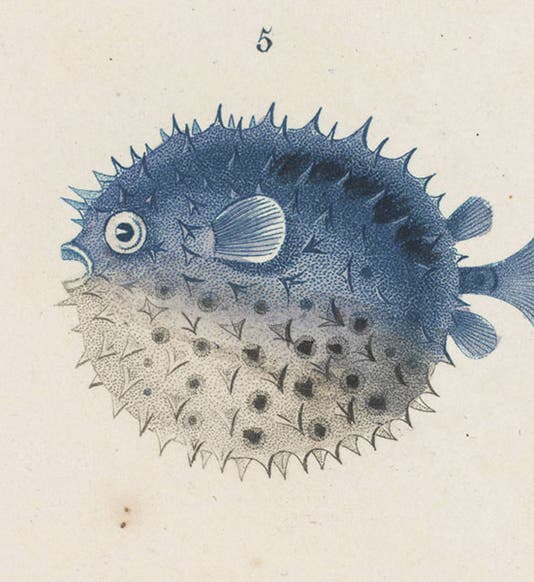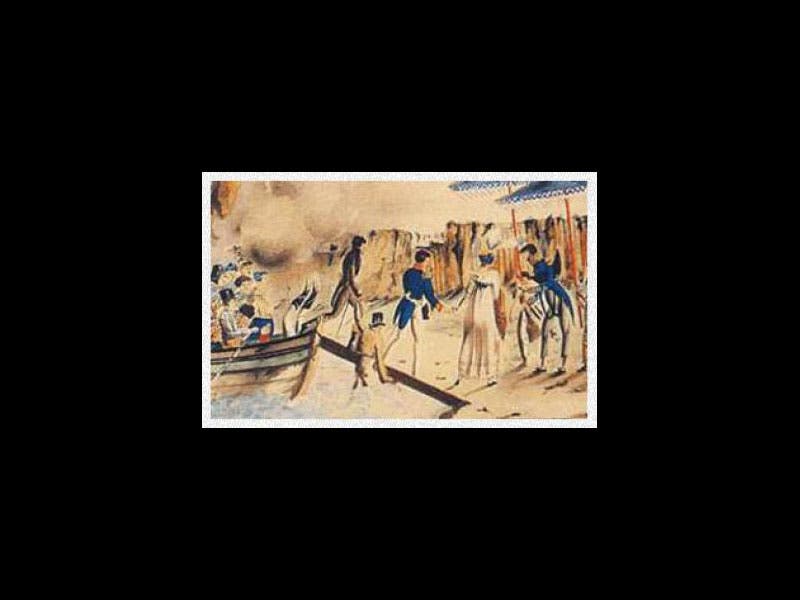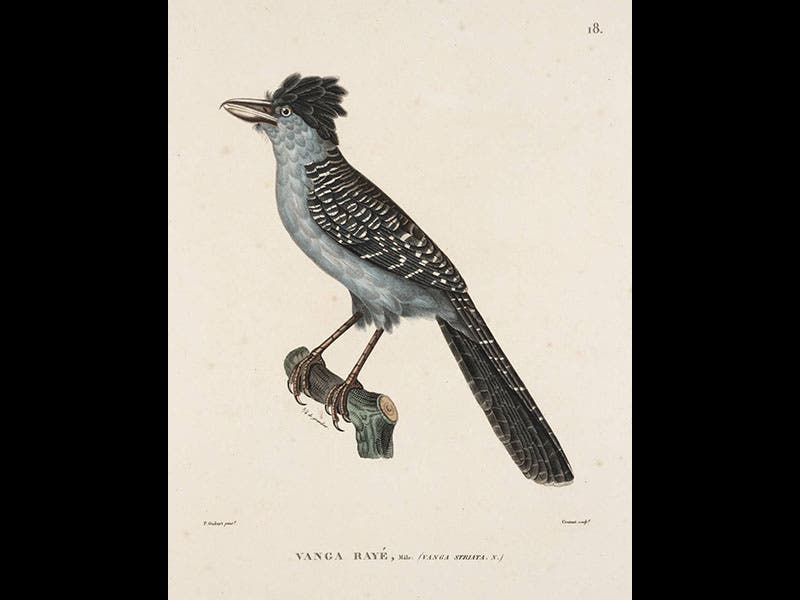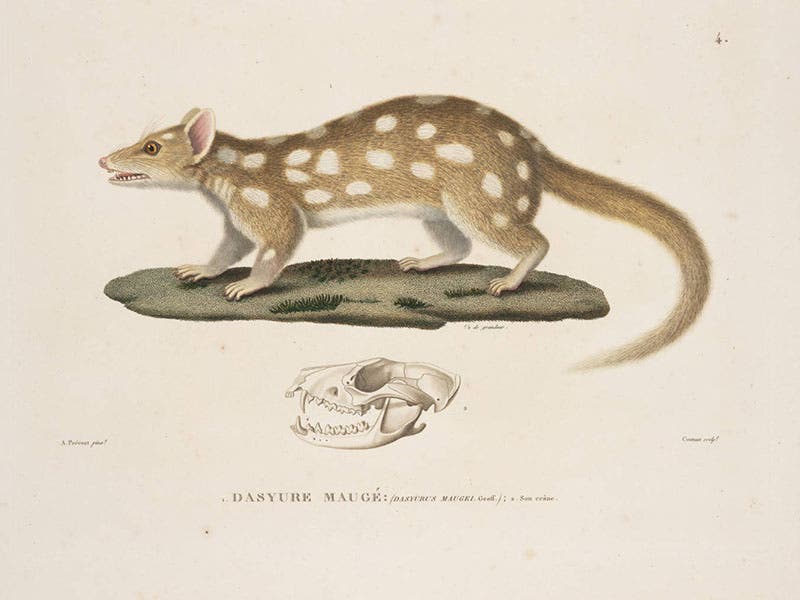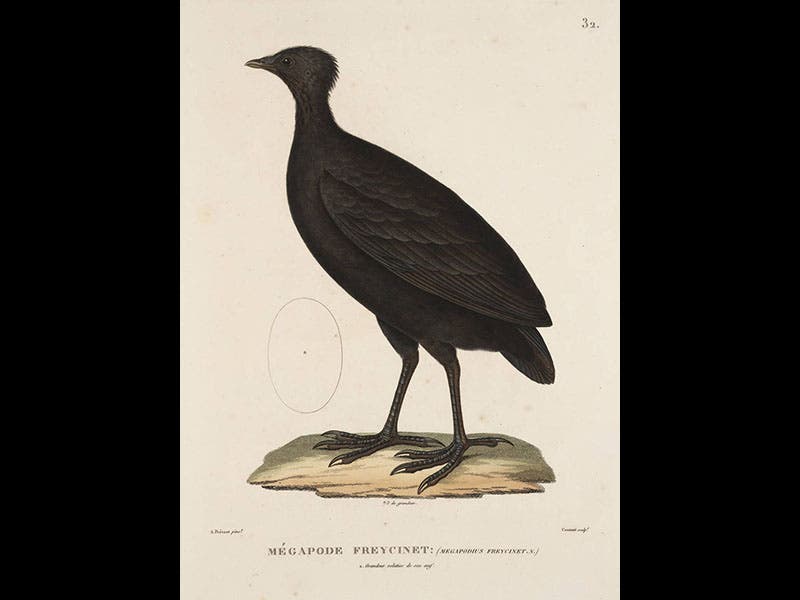Scientist of the Day - Louis de Freycinet
Louis Claude Desaulses de Freycinet, an explorer and officer in the French Navy, was born Aug. 7, 1779. From 1817 to 1820, Freycinet commanded the ship L'Uranie on a round-the-world voyage to Australia and New Guinea. This was the first attempted French circumnavigation since the interruption of the Napoleonic wars. On board were two very competent naturalist-surgeons, Jospeh Paul Gaimard and Jean Rene Constant Quoy, who gathered an extraordinary number of zoological and botanical specimens. Also on the ship was Freycinet's wife, Rose, whom he successfully smuggled on board, and who thus became the first woman to circumnavigate the globe. Freycinet seldom referred to Rose in the official accounts, although he did name a dove and an island after her, and the artist on board, Jacques Arago, included Rose in a few of his sketches (second image).
The Uranie was wrecked in the Falkland Islands on the voyage home, so Freycinet bought an American ship, re-christened her the Physicienne, and returned safely to France, with all his crew and most of his specimens. In 1824, he began publishing a narrative of the three year adventure, Voyage autour du monde entrepris par ordre du Roi, exécuté sur les corvettes de S.M. l'Uranie et la Physicienne, ultimately comprising 9 text volumes and 4 folio atlases of plates. We show above some of the images from the Zoologie atlas, including an antshrike (third image), a quoll (a carnivorous marsupial, fourth image), and a dusky scrubfowl (fifth image) that carries the scientific name of Megapodius freycinet.
The plate reproduced in our sixth image depicts a variety of fish, including a Diodon, or popcupine fish, at bottom right, for which we have provided an enlargement (first image). When Charles Darwin first reached South America in 1832 on board the Beagle, he had quite an encounter with a Diodon, as he attempted to see if the fish could swim upside down when inflated with air. Did he use Freycinet to identify Diodon? He could have, since all of the volumes of Freycinet’s Voyage that had been published so far, including the Zoologie volume, were on board and right at hand, as part of the Beagle Library.
We have displayed Freycinet’s narrative twice, in our Voyages exhibition (2002), and in our celebration of the Darwin bicentennial, The Grandeur of Life (2009).
Dr. William B. Ashworth, Jr., Consultant for the History of Science, Linda Hall Library and Associate Professor, Department of History, University of Missouri-Kansas City. Comments or corrections are welcome; please direct to ashworthw@umkc.edu.

